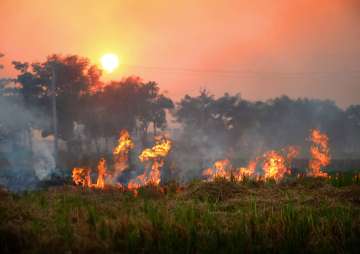Stubble burning cases: Punjab has seen a record rise in stubble burning this year and stands at 9,594 adding up to the existing pollution in air. On November 2, 1,921 cases of stubble burning were reported in Punjab, which is the highest number of cases this season. As the window for Rabi crop, wheat is very short after the paddy harvest, some farmers set their fields on fire to quickly clear off the crop residue for sowing the next crop.
Earlier on October 31, there were 1,389 incidents of stubble burning in Punjab. Sangrur district is on top in cases of stubble burning where 345 cases of stubble burning have been reported in a single day. 226 cases have been reported in Tarn Taran, 200 in Firozpur, 157 in Mansa and 127 in Patiala.
Worst AQI
Following this, the AQI of many cities of Punjab is also continuously deteriorating. Bathinda's AQI is 279, Ludhiana (254), Amritsar (218), Patiala (180), Mandi Gobindgarh (262) and Jalandhar (169).
On October 29, Punjab reported 1,068 farm fires including Sangrur with a maximum of 181, followed by 155 in Ferozepur, 133 in Tarn Taran, 83 in Patiala and 66 in Mansa, according to the data of the Ludhiana-based Punjab Remote Sensing Centre. The state recorded 49,922 fire events in 2022, 71,304 in 2021, 76,590 in 2020, 55,210 in 2019 and 50,590 in 2018 with many districts including Sangrur, Mansa, Bathinda and Amritsar witnessing large number of stubble burning incidents.
With about 31 lakh hectares of paddy area, Punjab produces around 180-200 lakh tonne of paddy straw every year and of which 120 lakh tonne was being managed through in-situ (mixing crop residue in fields) and around 30 lakh tonne ex-situ (using stubble as fuel) management methods.
Latest India News
